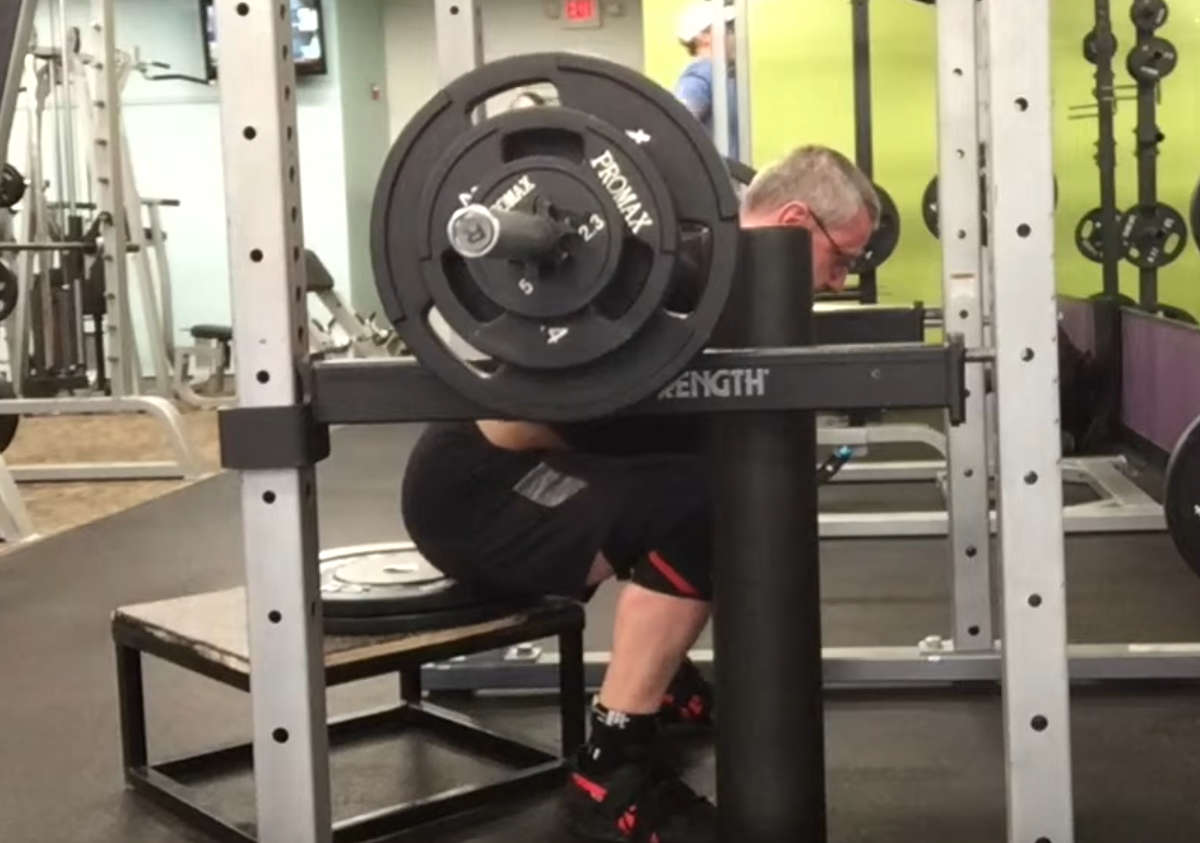Introduction:

Image: marklowelifts.com
If you’re an avid gym-goer, you’ve probably heard the term “butt wink” thrown around. But what exactly is it, and why does it matter? Butt wink, in essence, is an excessive inward curvature of the lower back at the bottom of a squat. While it may seem like a minor technicality, this common issue can actually result in pain, discomfort, and even injury. Fortunately, with some targeted exercises and proper form adjustments, it’s possible to overcome butt wink and achieve a safe and effective squat.
In this comprehensive guide, we’ll delve into the causes and consequences of butt wink, provide step-by-step instructions on corrective exercises, and offer expert insights to help you master the proper squat form. By understanding and addressing this subtle yet significant issue, you’ll be able to unlock the full benefits of this essential exercise without compromising your body’s well-being.
Understanding Butt Wink:
To fix a butt wink, we must first understand its root causes. Typically, it occurs when the muscles surrounding the hips and pelvis are weak or inflexible. Specifically, weakness in the glutes (buttocks), hamstrings, and core can lead to an inability to maintain a neutral spine during a squat. As a result, the pelvis tilts forward, causing an inward curvature of the lower back.
Butt wink can also be caused by excessive tightness in certain muscles, such as the hip flexors. When these muscles are too tight, they restrict the hips from moving properly, contributing to an anterior pelvic tilt. This imbalance further exacerbates the butt wink.
Recognizing butt wink is essential for maintaining proper form and preventing injuries. If you notice an exaggerated inward curvature of your lower back at the bottom of your squats, it’s likely a sign of butt wink. Additionally, you may experience pain or discomfort in your lower back, hips, or knees.
Step-by-Step Corrective Exercises:
Addressing butt wink requires a targeted approach that involves strengthening the weak muscles and stretching the tight ones. Here are some effective corrective exercises:
1. Bridging:
- Lie down on your back with your knees bent and feet flat on the floor.
- Squeeze your glutes and lift your hips towards the ceiling, forming a straight line from your shoulders to your knees.
- Hold for 5-10 seconds and lower back down. Repeat for 10-15 repetitions.
2. Hamstring Curls:
- Lie on your back with your knees bent and feet flat on the floor.
- Hold a dumbbell or resistance band in each hand and place your elbows by your sides.
- Lift your hips off the floor and extend your legs, keeping your core engaged.
- Slowly lower your hips back down while keeping your legs extended. Repeat for 12-15 repetitions.
3. Glute Bridges with Resistance Band:
- Place a resistance band around your feet, just above your ankles.
- Lie on your back with your knees bent and feet flat on the floor, shoulder-width apart.
- Press your feet against the band and lift your hips towards the ceiling, squeezing your glutes at the top.
- Hold for 5-10 seconds and lower back down. Repeat for 10-15 repetitions.
4. Kneeling Hip Flexor Stretch:
- Kneel on one knee, with your other leg extended out in front of you.
- Place your hands on your front thigh and lean forward, ensuring your knee stays in contact with the floor.
- Gradually increase the stretch until you feel it in your hip flexor. Hold for 30-60 seconds and repeat on the other side.
5. Clamshells:
- Lie on your side with your knees bent and feet stacked on top of each other.
- Open your top knee, lifting it towards the ceiling, while keeping your feet together.
- Hold for 5-10 seconds and lower back down. Repeat for 12-15 repetitions on each side.
Expert Insights:
To complement the corrective exercises, here are some valuable insights from experts in the field:
-
Focus on Hip Mobility: Certified Strength and Conditioning Specialist, Brad Schoenfeld, emphasizes the importance of improving hip mobility by incorporating dynamic stretches and mobility drills into your workout routine.
-
Engage Your Core: According to physical therapist and orthopedic specialist, Nancy Kadel, maintaining a strong and engaged core is crucial for stabilizing the spine and preventing excessive lumbar curvature.
-
Progress Gradually: Personal trainer and fitness expert, Ross Enamait, advises against rushing the process. Start with a manageable weight and gradually increase the intensity and frequency of your corrective exercises over time.
Conclusion:
Overcoming butt wink requires a dedicated approach that combines targeted exercises, proper form adjustments, and expert guidance. By addressing this common issue effectively, you can improve your overall squat form, reduce pain and discomfort, and unlock the full potential of this essential exercise. Remember, consistency and patience are key. With the right exercises and techniques, you can master the squat with confidence and achieve your fitness goals.
If you’re experiencing persistent pain or significant discomfort, it’s advisable to consult with a qualified healthcare professional or certified fitness trainer to ensure proper diagnosis and tailored treatment. Together, you can create a personalized plan to correct your butt wink and ensure your fitness journey is both safe and fulfilling.

Image: www.youtube.com
How To Fix A Butt Wink